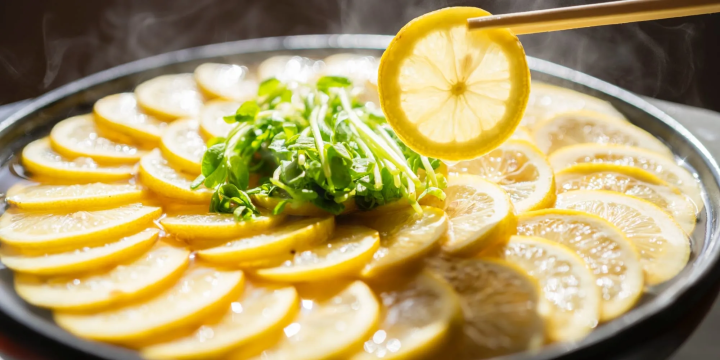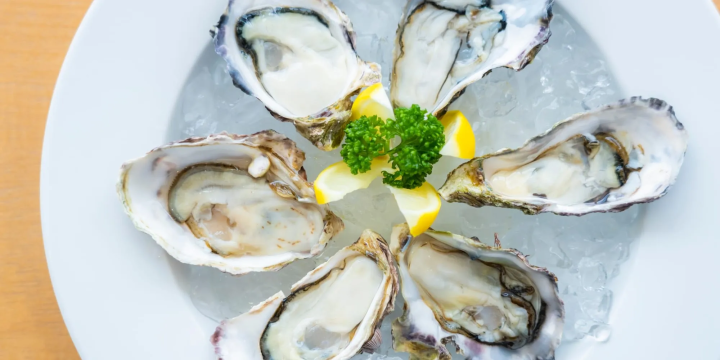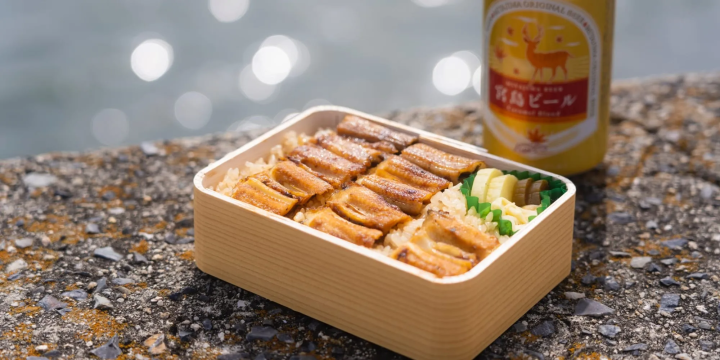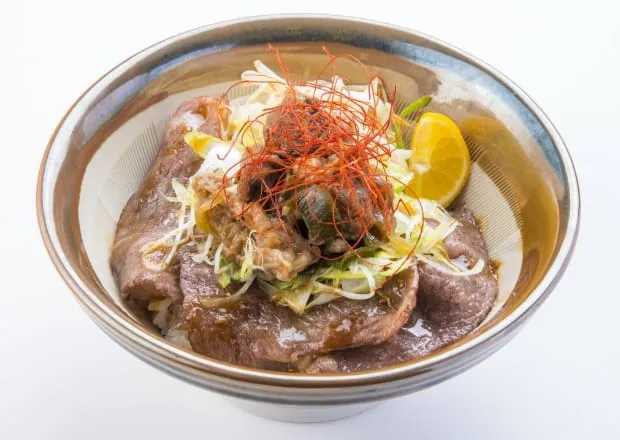5 Recommended Local Gourmet Foods in Hiroshima

A delicious Hiroshima dinner that even the locals will love! Hiroshima gourmet cuisine has developed through history, culture, rich nature, and the passion of local people. In addition to first-class ingredients such as fresh seafood caught in the Seto Inland Sea, traditional and prestigious Hiroshima Wagyu beef, and lemons that are ranked No. 1 in Japan in production, we also offer exquisite dishes made with the ingenuity and attention to detail of restaurants from all over the country. You can...
Select ① Oysters

The scent and flavor of the sea is juicy! King of Hiroshima Seafood
Oysters from Hiroshima Prefecture boast the highest production volume in Japan. Hiroshima has the perfect conditions for growing delicious oysters, such as gentle waves, moderate currents, and an abundance of phytoplankton, and there are records that oysters were farmed as far back as the Muromachi period. Hiroshima oysters have large bodies compared to their shells, and are characterized by a plump and rich flavor. During the fall and winter seasons, restaurants offer a variety of menu items, including not only raw oysters and grilled oysters, but also pasta, okonomiyaki, and hot pot. A self-grilled oyster shack has also opened, where you can eat your fill of freshly grilled, juicy, plump oysters right next to the sea.

During the winter oyster season, you can enjoy grilled oysters at oyster huts. Hamayaki style is the standard, where you can grill it yourself and enjoy it. You can also eat it with lemon juice or ponzu sauce if you like.

There is a wide variety of processed oyster products, including oysters pickled in olive oil. It can be purchased at souvenir shops.
Select ② Okonomiyaki

A taste of Hiroshima's hometown with a rich sauce that will whet your appetite!
It goes without saying that Hiroshima prefecture's soul food. Unlike ``mixed yaki,'' which involves adding ingredients to the dough and baking it, ``layered yaki'' is characterized by baking the dough into a thin crepe shape and layering cabbage, bean sprouts, pork belly, noodles, etc. on top. In Hiroshima, in addition to buildings with multiple shops, there are shops frequented by locals all over the place. Each restaurant has its own unique way of cooking the noodles, toppings, sauces, etc., and local yaki that has evolved uniquely in each region of the prefecture, such as ``Bingo Fuchu-yaki'' with minced meat and ``Takehara-yaki'' with sake lees. Existence. Please try different flavors at different restaurants and find your favorite!

``Kureyaki'' is characterized by its half-moon shape. It is said that the reason why the percentage of udon noodles is so high is because craftsmen who were building ships at military ports used thin udon noodles that were easy to cook so they could eat them during their breaks.

Many types place grilled oysters on top, rather than sandwiching them between the pieces of dough. Kakioko with juicy oysters and plenty of green onions looks gorgeous!
Select ③ Conger eel rice

A local dish that is very popular for its fluffy conger eel and fragrant sauce bento
``Anagomeshi'', a representative dish of Miyajima cuisine, is based on ``conger eel bowl'', which was originally a beloved fisherman's dish from the Seto Inland Sea. It is said that during the Meiji period, Ueno Tomoyoshi, who was a businessman in Miyajima, modified the conger eel bowl and sold it as ``conger eel bento'', which became popular all over Hiroshima and became established as a specialty. Since ancient times, conger eel has been caught in Ono Seto, which runs between Miyajima and the mainland, with its fatty, tender flesh and rich flavor. The fluffy broiled conger eel, fluffy seasoned rice, and special sweet and spicy sauce combine to fill your mouth with deliciousness.

Seasoned rice made with the head and backbone of conger eel, soup stock made from kelp, and soy sauce. Because it has a strong flavor, it is delicious not only when freshly made, but also when it is cold.
Select ④Lemon pot

Enhance the look and taste with lemon! Photogenic hot pot
A new type of hotpot has arrived from Hiroshima, which is the largest producer of domestic lemons in Japan. ``Lemon hot pot'' with lemon slices lined up in rows is rapidly gaining popularity, especially among women, due to its gorgeous appearance. The sourness of the lemon becomes mellow when heated, making it refreshing even with slightly greasy ingredients. Most of the soups are simple, such as salt-based, kelp, or white miso, and go well with meat, seafood, and a variety of vegetables. Ramen is recommended for the last meal! The refreshing soup with the flavor of the lemon and ingredients melts into the noodles and makes your chopsticks go further and further.

A pot full of sliced lemons with skin, made with Hiroshima lemons that do not use preservatives. In addition to meat and fish, it is also healthy because you can get plenty of vegetables.

On Ikuchijima Island, a lemon producing area, you can enjoy lemon hotpot made with fresh seafood at a restaurant. There are two ways to eat the lemon: you can remove it and eat it, or you can eat it as is.
Select ⑤ Hiba beef

The flavor and richness of the meat is juicy and tender.
Originating from the excellent Wagyu beef lineage ``Tsuru Iwakura'', it has a long history of being number one in Japan at the ``National Wagyu Ability Exhibition,'' known as the ``Wagyu Olympics,'' and winning the Emperor's Cup, the highest honor in the livestock industry, at the ``Agriculture, Forestry and Fisheries Festival.'' brand beef. Only beef that meets the standards set by Shobara City is certified as Hiba beef, and the meat is characterized by its low fat content and bright red marbling. In Shobara City, you can enjoy Hiba beef bowl, steak, curry, omelet rice, and a variety of other dishes at roadside stations and restaurants. It has a soft texture and a strong meat flavor and richness, but is not greasy and has a refreshing aftertaste. It's a top class A gourmet dish that you want to try at least once.

Shobara City, located in the north, has a large temperature difference between day and night, and is one of the prefecture's leading rice producers due to its abundant source water. The combination of Hiba beef and high quality white rice is the best.
Hiroshima Prefecture is not just about the world heritage sites of Miyajima and the Atomic Bomb Dome. Hiroshima is full of delicious food! Okonomiyaki, which is synonymous with Hiroshima, fresh seafood such as oysters, octopus, sea bream, and conger eel, Onomichi ramen, which is now nationwide, Hiroshima beef, which is highly regarded for its high meat quality, handmade soba, lemons and oranges, which are the largest producers in Japan.・Abundant food resources such as grapes are unique to Hiroshima. Many events unique to the region are also held, such as the sea festival, kagura, and Mibu flower rice planting. Cycling, trekking, skiing and snowboarding on the Shimanami Kaido will keep you active. Miyajima, which is registered as a World Heritage Site, and the Atomic Bomb Dome are not the only attractions, and there are many ways to enjoy it.
The contents on this page may partially contain automatic translation.







![[2025 Latest] How to get from Osaka to Hiroshima quickly and cheaply? How to get there by Shinkansen, bus, and car](https://resources.matcha-jp.com/resize/720x2000/2024/05/16-180184.webp)


























![[Coupon Available] Attention Overseas Winter Sports Fans! Nagano's Sports Depot Has Evolved](https://resources.matcha-jp.com/resize/720x2000/2026/01/05-254819.webp)
![[2 hours from Tokyo ] 10 Quiet and Breathtaking Views of Mount Fuji in Yamanashi Hokuto City , Yamanashi - Part 2](https://resources.matcha-jp.com/resize/720x2000/2025/12/16-253037.webp)
